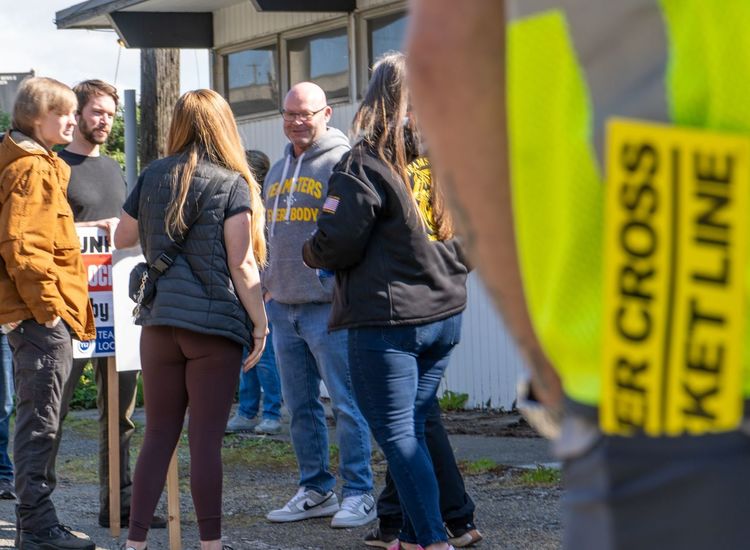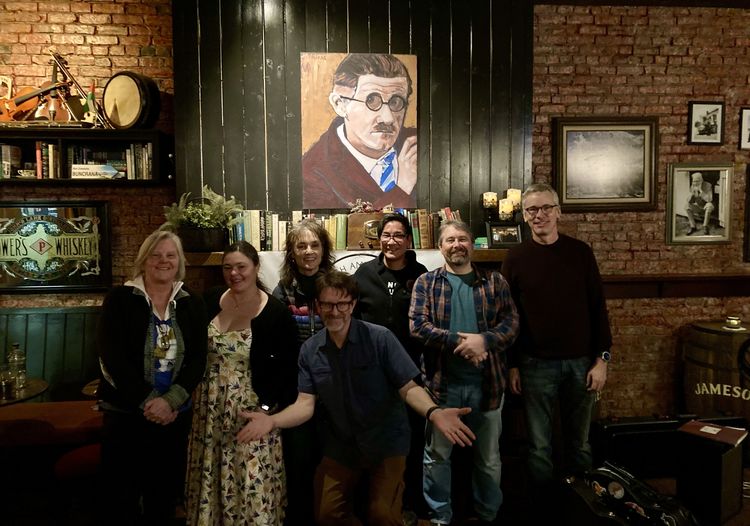A few Sundays ago I spent a short time, along with scores of other republicans, remembering and celebrating the live and courage of IRA Volunteer Joe McDonnell.
It was the anniversary of Joe's death. He died on hunger strike on July 8th 1981 after 61 days without food. Many in Irish America will remember those days. All of the multitude of groups - from Noraid to Clann na Gael to the Ancient Order of Hibernians to the Brehon Law Society and many others - were active in support of the hunger strikers and against, in particular the use of plastic bullets.
Former H-Block blanket men traveled via various clandestine routes into the USA to speak at events and win support for the prisoners demands. The solidarity connections which grew out of that period were enormously important over a decade later as the peace process developed.
On that Sunday, Sinn Féin had organized a white line picket along the Andersonstown Road in West Belfast. Such pickets involve protestors standing along the dividing white line on the road holding a placard or in this instance photo of Joe. It was a method of highlighting the hunger strike frequently used then and since.
I was standing not far from the party's Connolly House office and close to the junction with St. Agnes's Drive.
In the busyness of my life I don't often get the opportunity to just reflect; to take a few minutes and allow the mind to relax and wander; to look around and recall events or people connected to wherever I am.
But for about 30 minutes as I stood there on my own, with lines of republican activists stretching away on either side of me, I reflected back to July 8th 1981 and the day we walked behind Joe's coffin from his home in Lenadoon, down the Shaw's Road, and along the Andersonstown Road to Milltown Cemetery.
31 years ago it was a beautiful summer's day. There were thousands of people standing along the footpaths and many more following the cortege. Joe's coffin was set on trestles just outside Connolly House - which was then an empty building - and an IRA firing party stepped forward and gave their comrade his last salute.
They then disappeared into the crowd and slipped up through the houses toward St. Agnes's Drive. Unbeknownst to any of us, British soldiers had moved in to the street. They raided a house in a bid to capture the firing party.
I remember hearing the shots being fired and then the British troops and RUC attacked the mourners firing plastic bullets. Men, women and children screamed and scattered, desperately trying to avoid being hit by a plastic bullet. Mothers held their children close to them desperately trying to shield them with their own bodies. Others lay on the ground, or hunkered down in shop doorways or behind cars. There was pandemonium along the Andersonstown Road.
That summer was a bleak time for many reasons but not least because of the widespread and devastating use of plastic bullets by the British army and RUC. Seven people were killed, three of them children, and hundreds more were injured, some permanently. It was a weapon of control and intimidation, and it was used indiscriminately and extensively.
We were determined not to allow the Brits to hijack or obstruct the burial of our friend and with difficulty we moved on down the Andersonstown Road toward Milltown.
It was only as we approached the cemetery a short time later that I learned that my brother Paddy had just been shot and seriously wounded.
The same morning Joe died, 16 year old John Dempsey, a member of Na Fianna Éireann, was shot dead just across the road from Milltown cemetery.
I attended John's wake and his funeral to Milltown before I went to Lenadoon and Joe's funeral.
Three years after those awful events, 23-year-old Sean Downes was shot and killed by a plastic bullet in August 1984 almost on the spot that Joe's body had rested for that final salute. He was struck by a plastic fired an RUC man, as the RUC attacked a peaceful public demonstration and stormed the building.
Connolly House, like many other Sinn Féin offices, was targeted not just by the Brits and RUC, but also by their loyalist allies. Several activists were shot and wounded in one incident and an RPG rocket was fired on another.
Connolly House was also the location for many of our meetings with Irish Americans in the early days of the peace process and in 2004 we discovered a sophisticated listening device hidden in the floor of the building.
MI5 apparently described this as a "super bug." We brought the bug with us - or most of it - when we traveled to Leeds Castle for more talks aimed at getting the peace process back on track.
Martin McGuinness and I ceremoniously handed it back to Tony Blair. Although those bits that were kept were auctioned on e-bay. A good friend in America bought some of the pieces and still has them.
Around the corner from the Sinn Féin office is a shopping area still known locally as the Busy Bee, even though the supermarket of that name is no longer there. For many years, and especially during the hunger strike period, most republican marches ended there as the car park provided an almost natural amphitheatre.
A few hundred yards in the opposite direction from where I was standing is Casement Park. Just outside its main gates, in March 1988, two armed British soldiers attacked mourners attending the funeral of Caoimhín MacBradaigh, who had been killed when UDA gunman Michael Stone attacked the Gibraltar funerals. They themselves were overpowered and subsequently killed by the IRA.
So, two Sundays ago was a moment in time for reflection. Mostly about the hard times, the difficult times and the friends and neighbors who are no longer with us.
And that's good. We should never forget what happened or the bravery and audacity of those who created the opportunity for the republican struggle to grow.









